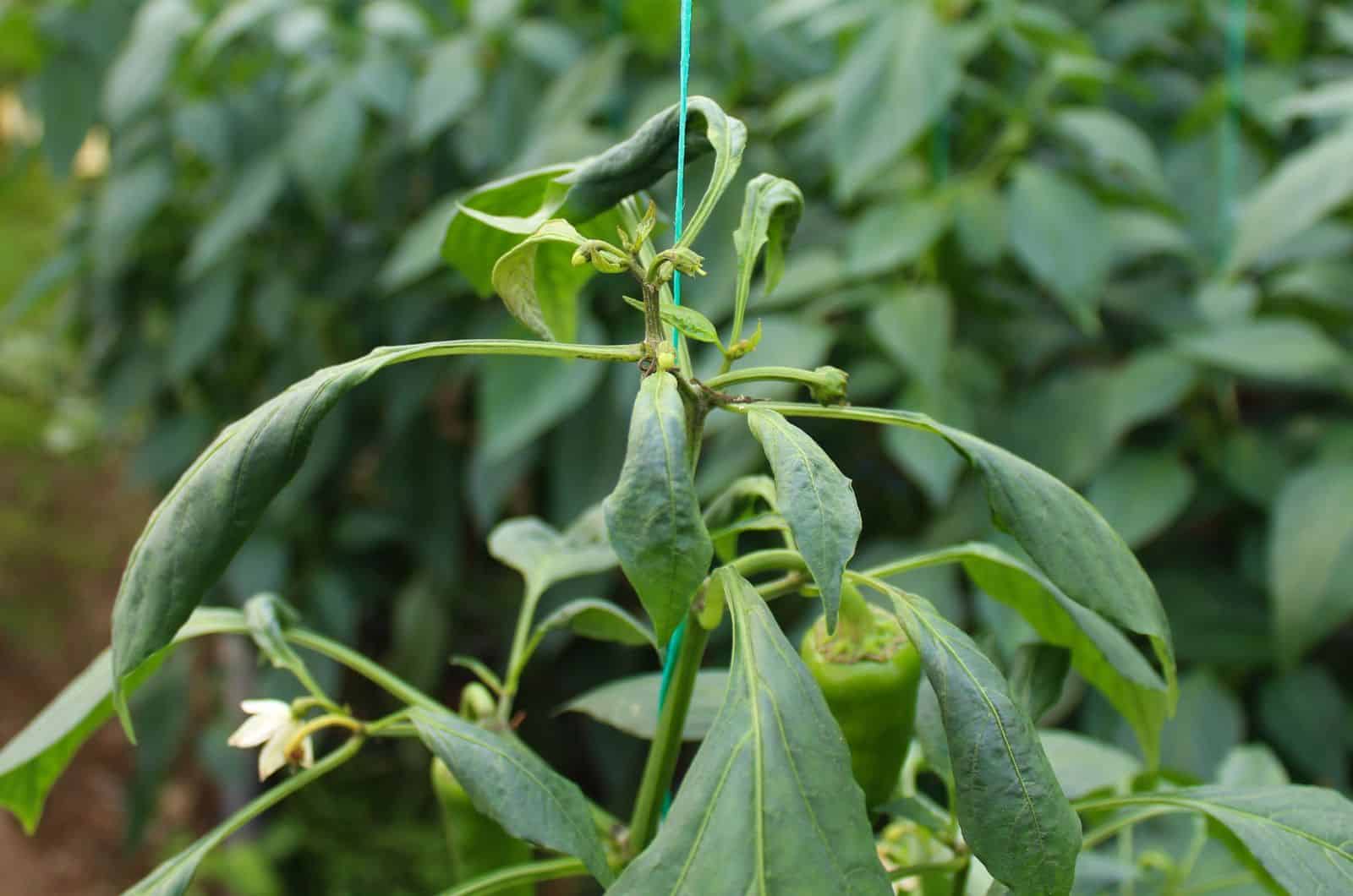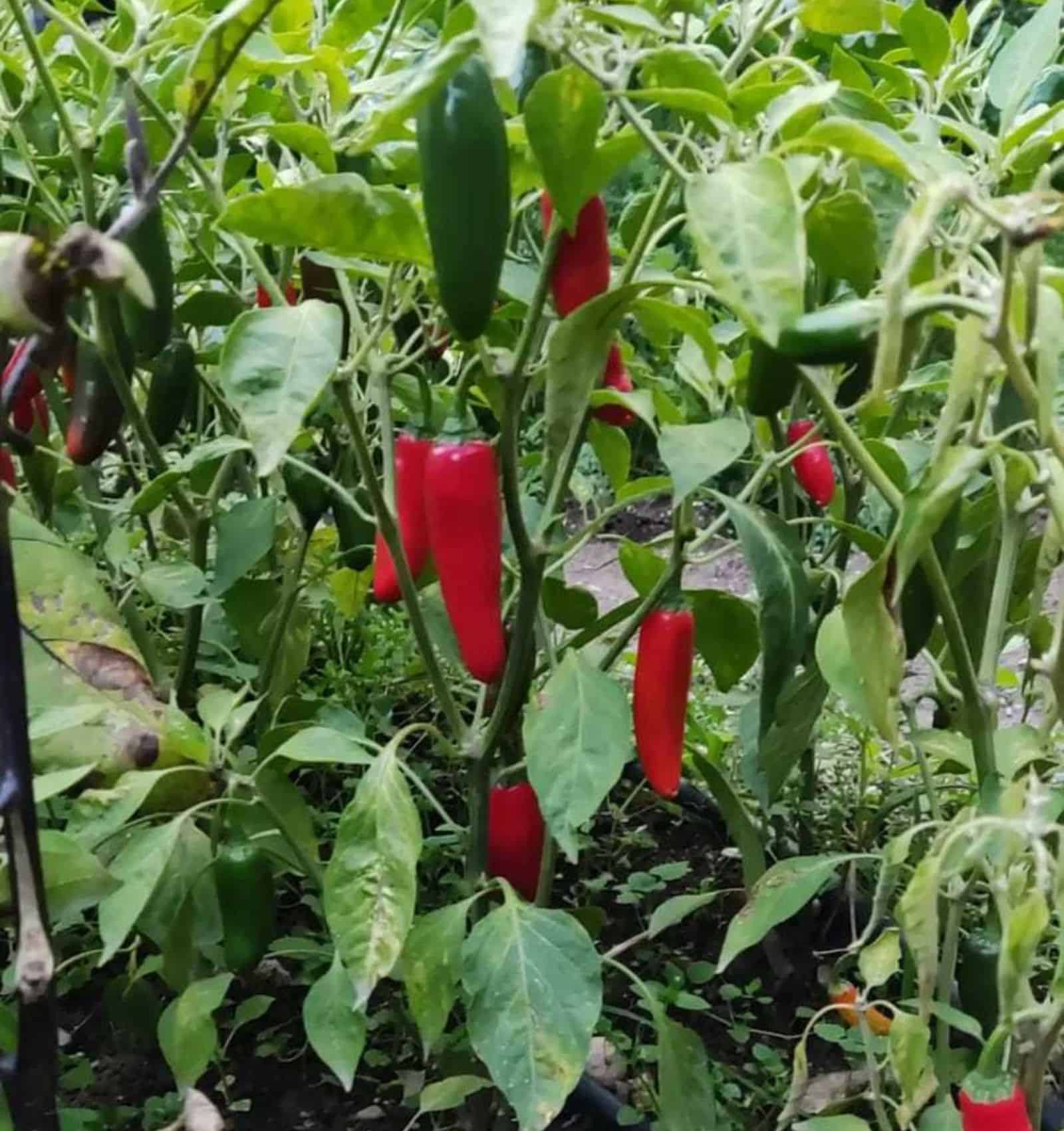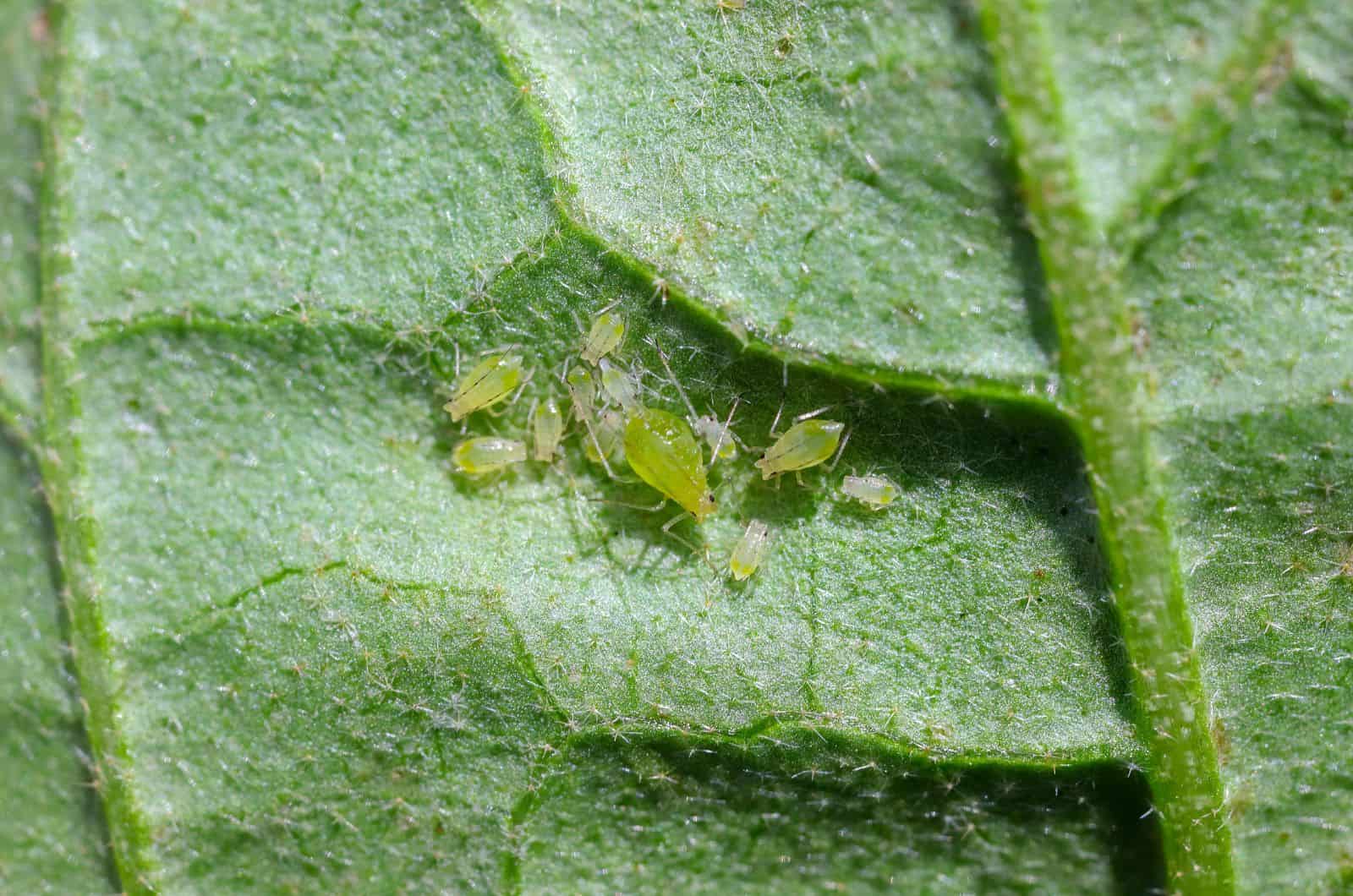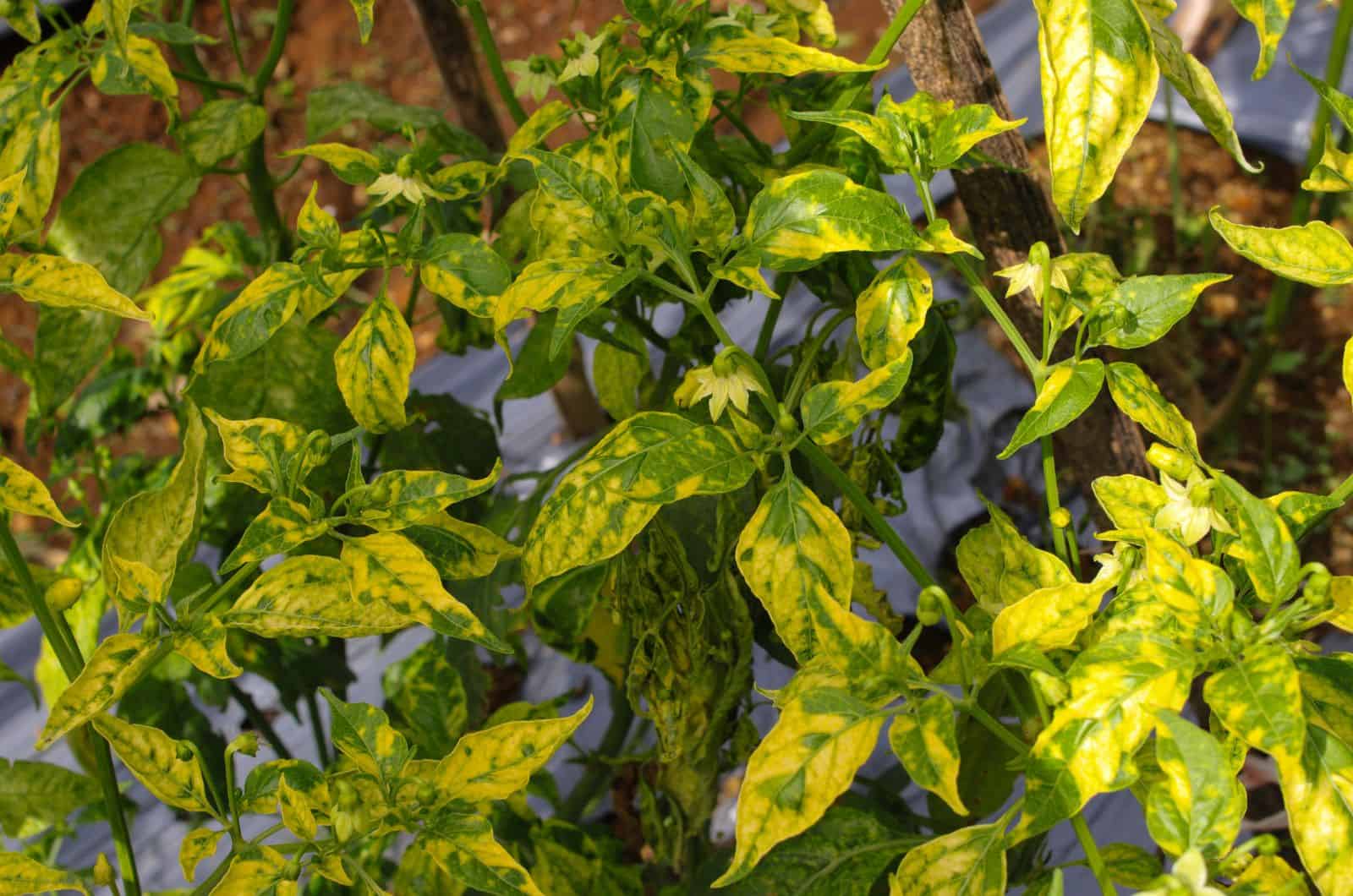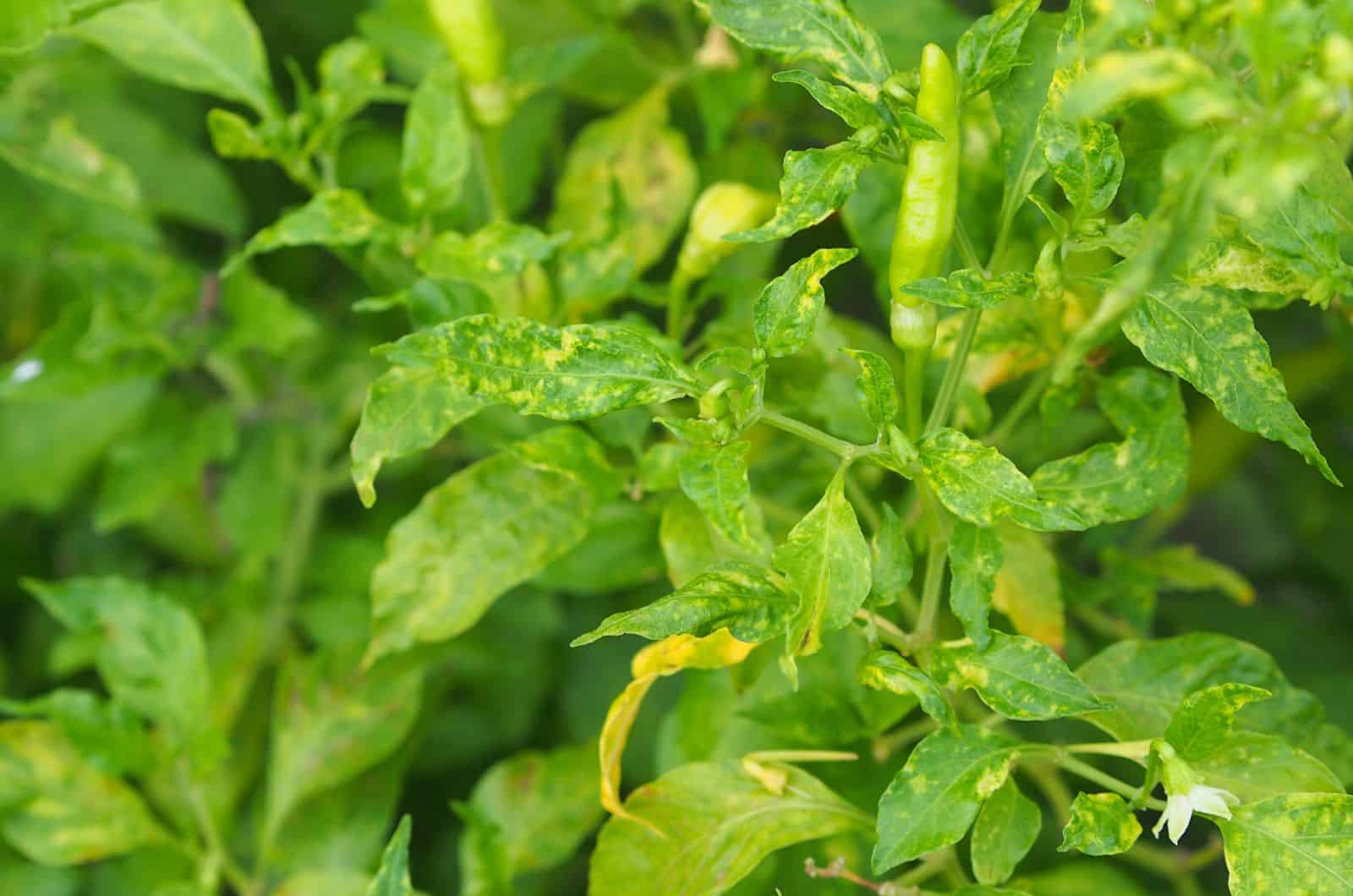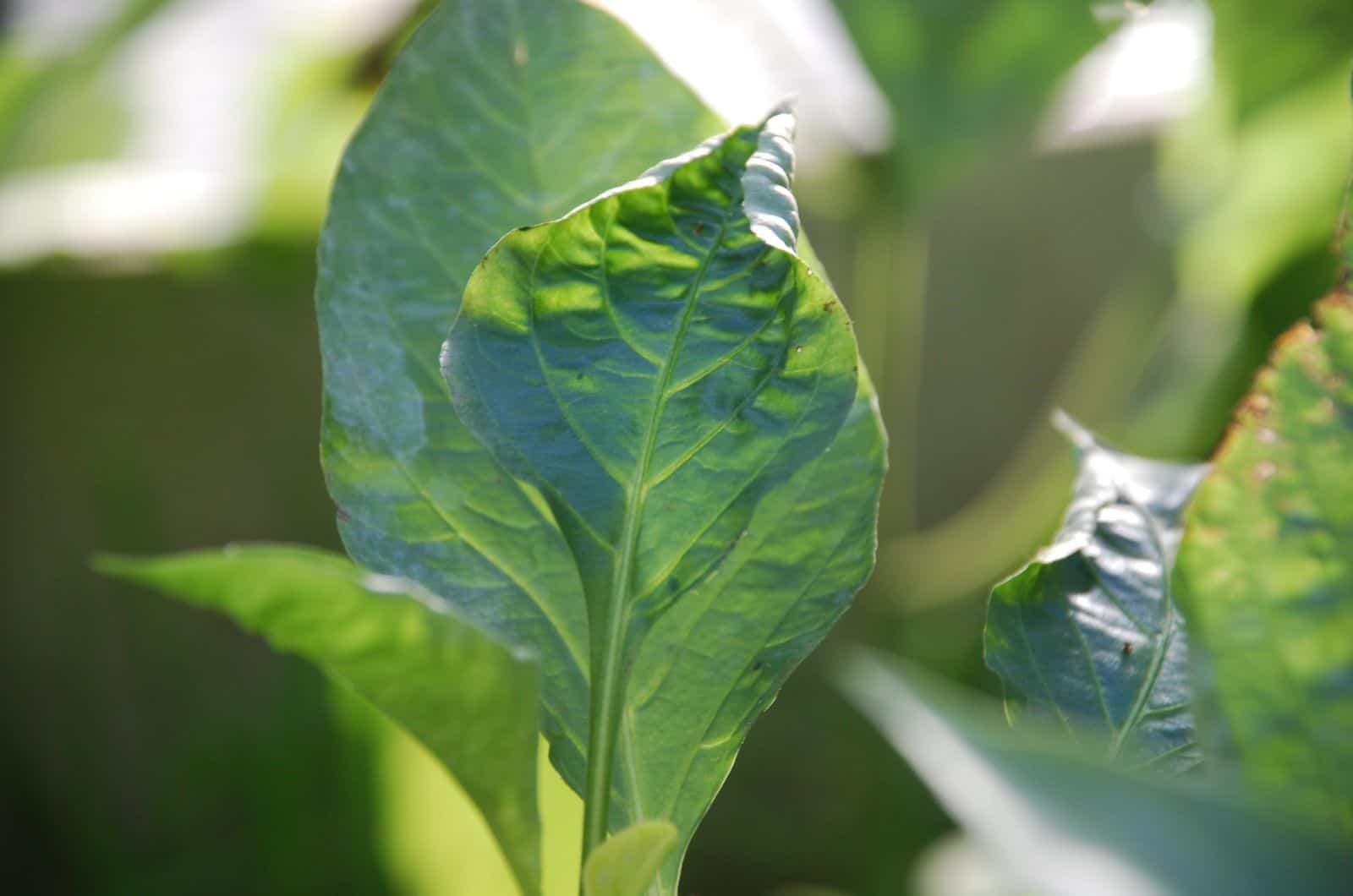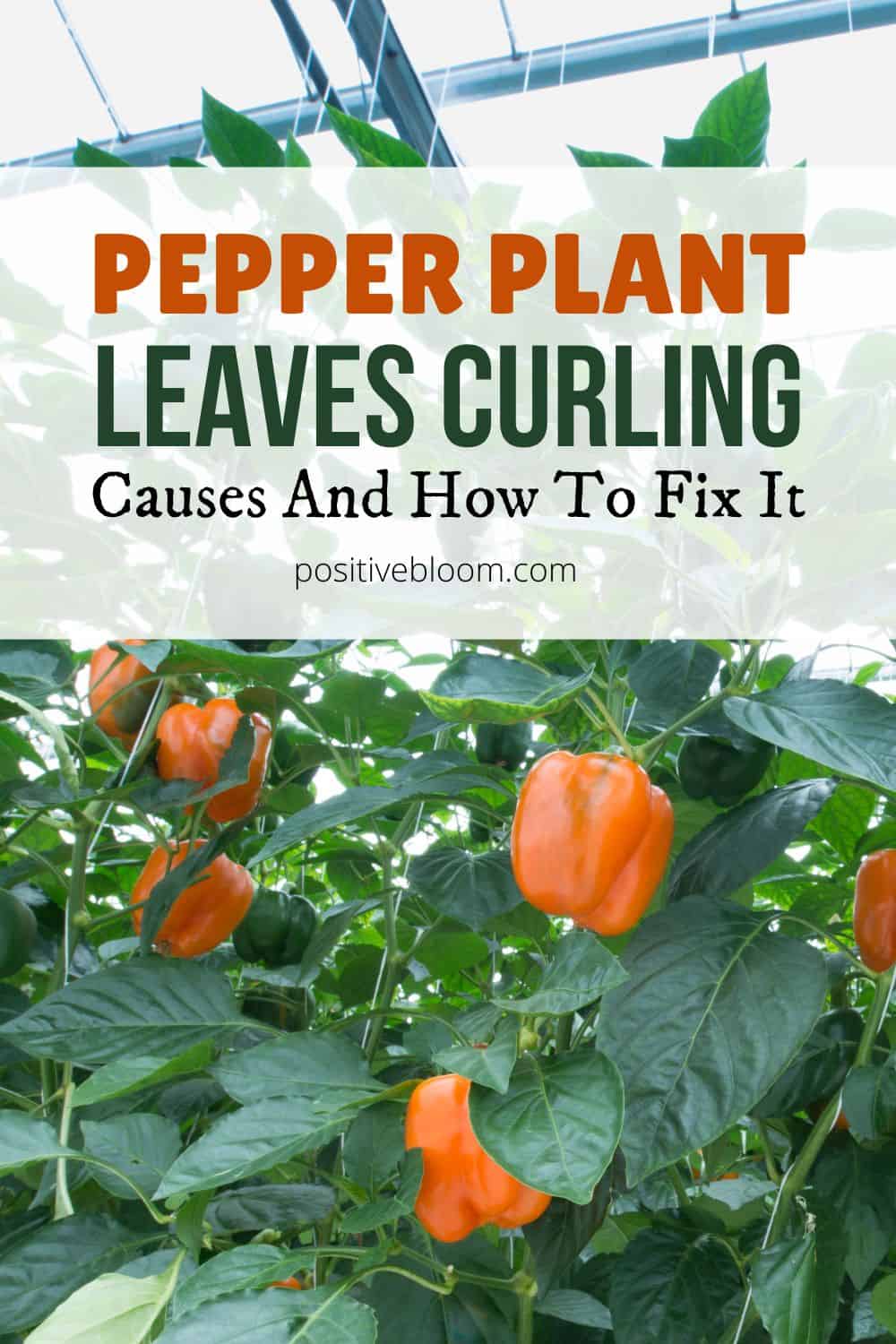Peppers are one of the most commonly grown veggies, and for good reason; these plants are easy to maintain and taste amazing!
You can grow peppers anywhere – in garden beds, greenhouses, and even in pots.
Unfortunately, peppers aren’t completely problem-free, and some issues may quickly occur if all their requirements aren’t met.
The leaves will show you when something is wrong, which is why you should monitor your peppers closely.
Leaf curl is a common issue, not only for veggies but for plants in general.
In this article, I’ll show you the causes of pepper plant leaves curling and also how to fix it.
Let’s get started!
Pepper Plant Leaves Curling: The Causes
Leaf curl can occur in all pepper varieties, including yellow habanero peppers and bell peppers.
There are a few causes of leaf curling on pepper plant leaves, such as overwatering, underwatering, calcium deficiency, plant edema, too much sun exposure, infestation, viruses, and transplant shock.
Let’s get into details!
Overwatering
Peppers thrive in moist soil, but growers sometimes have issues differentiating between moist and soggy soil.
Overwatering is one of the most common causes of leaf curling on pepper plant leaves. The water requirements of pepper plants depend on where they’re growing.
For example, potted peppers are sensitive to overwatering. If you don’t ensure well-draining potting soil, your peppers will face many issues.
What is going on below the soil surface of overwatered peppers? Pepper roots need oxygen, so the air spaces in the potting soil play a major role.
When you overwater your peppers, the air spaces will clog and the roots will most likely suffocate. Water pooling around pepper roots also attracts different pathogens, such as Phytophthora capsici. If this fungus attacks your peppers, they will end up with root rot.
But what does curling have to do with this? It’s simple; roots send nutrients and water to other parts of the pepper plant. When the roots stop working, the pepper leaves won’t have a water and nutrient supply.
As a result, the leaves will curl. As the disease progresses, you’ll notice yellow leaves and stunted growth.
Calcium Deficiency
Peppers need nutrients like phosphorus, nitrogen, and potassium. If they’re lacking any of these primary nutrients, it may result in serious damage.
But peppers also need calcium. They won’t develop cell walls if they lack calcium.
What leads to calcium deficiency in pepper plants? The first cause is an insufficient level of calcium in the soil.
Your pepper may also lack calcium if it doesn’t receive water for too long, which is necessary for calcium absorption.
Once the leaves use up all their calcium, they’ll start curling and brown spots will appear.
Plant Edema
Although edema typically affects plants grown indoors, it can also affect peppers grown outdoors.
This is a cellular disorder that occurs when plants aren’t watered properly.
If your peppers suffer from edema, they’ll display lumps or bubbles that resemble crystals. Although these lumps are frequently seen on the leaf undersides, they can also appear on the leaf tips.
As the disease spreads, the leaves of your peppers will curl.
Too Much Sun Exposure
Peppers love full sunlight, and when grown outdoors they can’t get too much sun. However, for potted peppers grown indoors it’s quite a different matter.
Many growers often use grow lights for indoor peppers, and this is also one of the causes of pepper leaf curl.
When starting the pepper seeds indoors, they are less likely to sprout if we don’t use artificial lights.
But if peppers are too close to the light source, they’ll display leaf curl.
The leaves will first start curling up, and then eventually close as a response. This is a more common issue for younger peppers as they are more sensitive.
Pest Infestation
It’s pretty hard to avoid pests in outdoor gardening, so we should do anything we can to prevent them.
Some pests won’t damage your peppers. If you have ants on your peppers, don’t panic because they aren’t dangerous unless there are a great many.
The most common pests that inhabit pepper leaves and cause severe damage are aphids, thrips, whiteflies, and spider mites.
Aphids
An aphid infestation can severely damage your peppers. These tiny, sap-sucking insects cause wilting, curling, and stunted growth.
They frequently hide in clusters behind newly emerged leaves.
There are many aphid species, but the most common are green aphids, which are really adept at disguising themselves.
How can you tell if your peppers have an aphid infestation? Try catching some of these insects in a tiny plastic bag and take them to a nursery nearby.
Another way is to find and download an app that can identify different pest species.
Thrips
Thrips affect almost all outdoor plants, and peppers seem to attract them the most. These insects eat the leaves and buds, and as they spread, they cause the leaves to wilt and deform. Curling is the most common deformation.
The problem is that thrips can spread to pepper flowers and cause severe damage. Flowering is one of the pepper growing stages, so thrips will stop the plants from getting to the next stage – crop production.
One of the biggest dangers of thrips infestation is that these tiny insects can spread the deadly viral disease, Impatiens Necrotic Spot Virus.
Whiteflies
Whiteflies can seriously harm immature pepper plants and inhibit their ability to mature.
Your peppers may be affected by either silver whiteflies or greenhouse whiteflies.
These pests are really hard to spot, so you’ll need to use a magnifying glass and inspect the leaves, especially the undersides.
Whiteflies typically leave a sticky substance after feeding, which may help you identify them.
The leaves will curl, the growth rate will significantly reduce, and it will affect the crop production and quality of your crops.
Spider Mites
Spider mites rapidly reproduce and develop large colonies – it can take just several days to a week. They generally reside on the underside of the leaves. Still, as their numbers grow, they eventually engulf both the upper and lower surfaces.
These tiny creatures enjoy feeding on pepper leaves and leave spots everywhere.
If you don’t eliminate these insects, the leaves of your precious peppers will most likely curl, die, and fall off.
Inspect the leaves regularly, but don’t forget to inspect the soil too because spider eggs are frequently found in plant soil.
Viruses
The most common virus that affects these plants is the mosaic virus. When a plant becomes infected with the mosaic virus, it can then transmit the virus to other plant species, such as tomato plants. It can quickly ruin a whole harvest if you don’t treat it.
The infected plants will display a range of symptoms, such as patches, curling, stunted growth, and blisters.
Viruses can be challenging to identify as their typical symptoms resemble those of nutrient deficiency.
The mosaic virus spreads rapidly and may affect the whole pepper plant in a short time. Aphids and whiteflies carry the virus from one plant to another, so make sure to check for them.
Transplant Shock
If you start peppers indoors or in a greenhouse, you’ll need to be careful with transplantation.
Peppers can become stressed, and their leaves will curl as a response.
I mentioned that peppers started indoors don’t receive direct sunlight, so you’ll need to introduce them to this light level slowly before transplanting them.
Another possible issue is temperature shock because the temperatures aren’t the same in indoor or greenhouse settings as they are outdoors.
Pepper Leaves Curling: Solutions
Once you determine the cause of pepper leaf curl, you must find an adequate solution.
I’ll now show you how to fix each cause in just a few easy steps.
Let’s begin!
Solution To Overwatering
Although the logical solution to overwatering is not watering at all, trust me, this is not something you should do either!
You should allow the soil to dry out, and then continue watering after your pepper shows signs of improvement. If you leave it without water for too long, you’ll face another issue – wilting. If you like hot peppers, wait a little bit more with watering so they’ll be even spicier.
Water retention is a common issue in plant soil. Some materials in the soil may retain too much water, which leads to overwatering.
The best idea would be to keep your pepper soil moist, and as soon as you notice that the topsoil has dried out, add water. Inserting a finger in the soil or getting a hygrometer is a great idea for checking soil moisture.
Here are other tips for watering peppers:
• Water peppers in the morning: The best way to avoid overwatering your peppers is by letting the topsoil dry out. You can achieve this by watering in the mornings so that the water can evaporate throughout the day.
• If you grow peppers in pots, make sure the pots have drainage holes: Potted peppers thrive best if provided with good drainage. The best way to improve drainage in pots, apart from the potting mix, is by purchasing pots with drainage holes or making ones yourself.
• Use high-quality, well-draining, and porous potting mix: The ideal potting mix for pepper plants is porous, fertile, pH neutral, and well-draining. You can use compost based on loam to get loamy and fertile soil.
• Use the proper water type: Water type is tricky for potted peppers. The best water for plants is rainwater.
Solution To Calcium Deficiency
Before doing anything else, perform a soil test to determine if the soil lacks calcium.
You can give your peppers more calcium through drip irrigation, and it will effectively deliver it to the roots.
Start supplying calcium while the plant is in bloom and keep doing so until the fruit fully develops.
If calcium deficiency is caused by underwatering, you’ll need to change your watering habits. Use the tips for watering discussed above.
The good news is that you can easily prevent calcium deficiency by using a couple of methods.
Bone meal is the ideal fertilizer to use to raise the calcium content prior to planting because it’s organic and won’t contribute an excessive amount of nitrogen.
You can also feed your peppers with all-purpose fertilizer because it contains calcium.
Another great method is mixing eggshells in the compost before adding it to the pepper soil.
Solution To Plant Edema
Changing the amount of water your peppers receive is the best solution for edema. It may be better to wait until the plant has dried a little before watering it.
It’s crucial that the soil drains effectively and that you avoid letting your peppers stand in water as it can promote fungal growth.
Ensuring sufficient circulation between plants is also another method of treating edema. Plants can release surplus moisture through transpiration, which is aided by airflow.
If you grow your peppers in a greenhouse, you can use a fan to promote air circulation.
Luckily, edema won’t damage your peppers much, especially if it’s spotted in time.
Solution To Light Issues
We’ve seen that too much light can cause leaves to curl, especially in indoor peppers.
If grow lights cause curling, you can fix it using two methods.
First, you should make sure there’s enough space between the grow lights and peppers – 12 to 18 inches should be fine.
The second method is using the timer option. Peppers need a specific amount of light each day, and you can keep grow lights on for 12-16 hours.
Pay attention when purchasing grow lights; they should be high-quality and the timer option must work!
As mentioned, outdoor peppers are less likely to face issues with light. However, you’ll need to introduce direct light to your peppers if you start them indoors.
Solution To Infestation
Pests are common issues in the gardening world, which is probably why there are so many methods for eliminating them.
Controlling pests during flowering may be challenging, but it can be fixed with appropriate treatment.
Let’s look at the best methods for removing pests on pepper plants.
Use Neem Oil
Producers primarily use neem oil as pest control and a prevention measure. You can mix neem oil with water and pour it into a spray bottle. Spray it over the pepper leaves to eliminate aphids, thrips, spider mites, and whiteflies.
Avoid applying neem oil to pepper buds as it may impact the crop flavor and smell.
Pay attention to the ingredient ratio and dosage when applying this solution to your peppers, as neem oil may burn the leaves.
Use Insecticidal Soaps
Another great solution to pests that affect peppers is applying insecticidal soap.
Add 4 tbsp of soap to a gallon of water, pour the mixture into a spray bottle, and spray it over the pests.
You can apply this solution often until you eliminate all the pests. Just like with neem oil, don’t apply insecticidal soap on pepper buds or they’ll taste bitter and smell bad.
Attract Beneficial Insects
To remove pests, you can also attract or purchase beneficial insects like ladybugs and lacewings.
If you have a severely affected plant, I don’t recommend using this method alone. You can apply neem oil and then release ladybugs, and it will aid in removing pests but won’t repel the ladybugs.
Solution To Viruses
Unfortunately, the only thing you can do with your pepper if it’s suffering from the mosaic virus is dispose of it.
Put on gloves, grab a plastic bag, and put the infected plants in it. Never add infected peppers (or other infected plants) to your compost pile.
Your goal is to prevent the mosaic virus from spreading to your healthy plants, so keep an eye on all your plants that were near the affected ones.
If you were using any tools while handling infected plants, please sanitize them before using them again.
Solution To Transplant Shock
The conditions we provide for our indoor peppers differ from those that outdoor plants need. It’s expected that peppers will go through shock after transplantation.
But, there’s a great way to avoid this.
Take the transplant out, leave it exposed to direct sun for a few hours, and then bring it back in. Keep doing this for a couple of days, and increase the amount of time they spend outdoors each time.
Once you transplant your peppers, direct sunlight won’t stress them as much so you’ll avoid leaf curl (and many other issues).
How To Prevent Leaf Curl
Here are some tips on how to prevent pepper plant leaves from curling:
1. Test the soil before planting: Before you plant peppers, you should perform a soil test. If the test lacks some nutrients, simply add them to the soil. Remember that peppers need nutrients to produce new leaves, flowers, and delicious crops.
2. Water your peppers correctly: Inadequate watering can lead to plant discoloration, deformation, and fungal diseases. Keep pepper soil moist, but never waterlogged.
3. Use adequate potting mix: Use a well-draining potting mix for both indoor and outdoor peppers. Sandy and loamy soils will ensure good drainage, and that’s all your peppers need.
4. Treat the leaves with neem oil: Neem oil will repel pests, and pepper leaves won’t seem so tasty to them anymore.
5. Mulch peppers: Mulch the soil with grass clippings to improve soil quality.
Wrapping Up
Are your pepper plant leaves curling? Now you know all the possible causes of this leaf condition.
After you determine the cause, start with adequate treatment. Although some conditions can’t be cured, you can save other plants.
You don’t need to worry about issues such as curling if you care for your peppers properly. Use our tips and enjoy the most delicious veggies ever!
Until next time!
Like this post? Share or pin it for later!

